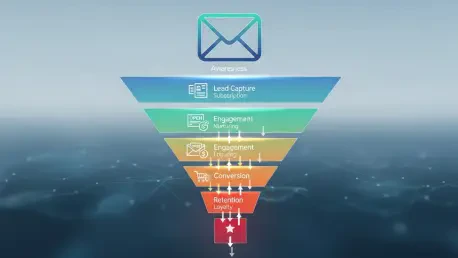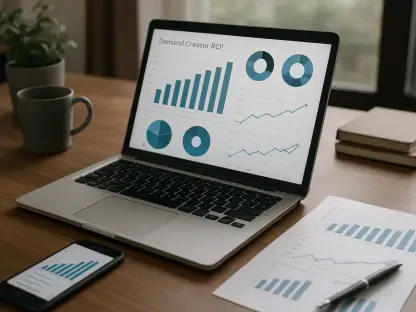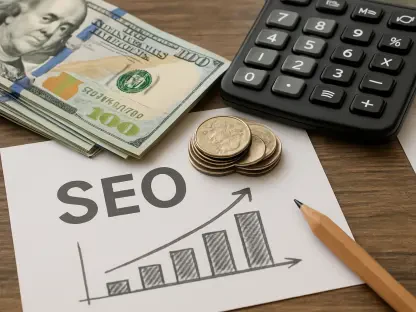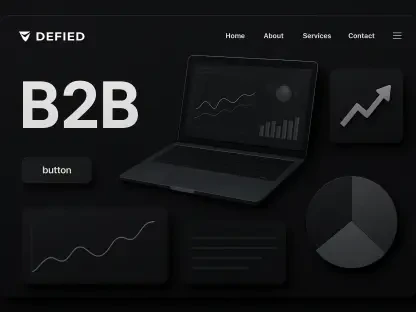Unlocking Repeat Business with Email Marketing Funnels
In the competitive landscape of digital commerce, retaining customers stands as a critical challenge, with studies showing that acquiring a new customer can cost up to five times more than nurturing an existing one, highlighting the immense value of turning casual buyers into loyal repeat purchasers. Email marketing funnels emerge as a powerful tool in this endeavor, offering a structured approach to guide customers through their journey with personalized touchpoints that build lasting connections.
Beyond mere transactions, email funnels create pathways for sustained engagement by delivering relevant content at pivotal moments. These systems allow businesses to address customer needs systematically, from the first interaction to long-term loyalty. By focusing on retention over acquisition, companies can maximize revenue while minimizing expenditure, setting the stage for a deeper exploration of how to construct such a funnel.
This guide aims to provide a comprehensive roadmap for crafting an email marketing funnel that drives conversions and fosters repeat business. Key stages such as awareness, consideration, conversion, and beyond will be detailed, alongside actionable strategies to ensure each phase resonates with the target audience. Readers will gain insights into turning strangers into loyal advocates through a well-orchestrated email strategy.
Why Email Funnels Are a Game-Changer for Customer Retention
Email marketing funnels hold a unique position in the digital marketing arsenal due to their ability to nurture relationships at a fraction of the cost of other channels. Industry experts highlight that email offers a cheaper delivery mechanism compared to SMS or paid advertisements, ensuring higher returns on investment. This cost-effectiveness makes it an ideal choice for businesses aiming to maintain consistent communication without straining budgets.
Moreover, email funnels excel in mapping the customer journey far beyond a single purchase, addressing pain points at each stage with tailored messaging. Unlike traditional marketing approaches that often conclude at the sale, these funnels continue to build trust through behavior-driven content, ensuring subscribers feel understood and valued. This ongoing dialogue transforms one-time buyers into long-term patrons by aligning communications with individual preferences and actions.
The impact of such targeted engagement is evident in improved customer loyalty and lifetime value. By delivering personalized experiences, email funnels foster a sense of connection that other channels struggle to replicate. As digital landscapes evolve, the strategic use of email remains a cornerstone for businesses seeking sustainable growth through retention-focused initiatives.
Step-by-Step Guide to Crafting a High-Converting Email Funnel
Stage 1: Awareness – Turning Strangers into Subscribers
At the awareness stage, the primary goal is to attract potential customers by offering tangible value in exchange for their contact information. This can be achieved through compelling opt-in incentives such as a discount on the first purchase or a free resource like an informative guide. Ensuring that sign-up forms are simple, with minimal fields to fill, reduces friction and encourages more visitors to subscribe.
Strategic placement of these forms also plays a vital role in capturing attention. High-traffic areas such as the homepage, blog pages, or during checkout processes are ideal locations to maximize visibility. Delivering on the promised value immediately through a welcome email that introduces the brand and provides clear next steps further solidifies the initial trust with new subscribers.
Avoid Inflated Metrics with Accurate Tracking
A critical aspect of measuring success at this stage involves focusing on reliable metrics rather than misleading data. Privacy features like Apple Mail Privacy Protection can cause automatic email opens, skewing open rate statistics. Instead, tracking metrics such as sign-ups and clicks provides a clearer picture of genuine engagement and helps in refining outreach efforts.
Stage 2: Consideration – Nurturing Interest into Intent
Once subscribers are on the list, the focus shifts to building their interest in the brand through engaging, concise content. Emails that offer a glimpse behind the scenes, such as a founder’s story, or showcase authentic customer testimonials can create an emotional connection. These messages should aim to educate rather than push for immediate sales, fostering curiosity about the products or services.
Monitoring key indicators like click-through rates and product page views offers insights into growing interest among subscribers. These metrics serve as a guide to understanding which types of content resonate most with the audience. Adjusting the approach based on this feedback ensures that communications remain relevant and compelling at this delicate stage.
Optimize Frequency and Timing
Experimenting with the frequency and timing of emails is essential to determine the sweet spot for engagement. Sending four to five emails over a span of one to two weeks can be a good starting point for many businesses. Analyzing response patterns during this period helps in fine-tuning the schedule to match audience preferences, thereby enhancing the likelihood of sustained attention.
Stage 3: Conversion – Closing the Deal with Confidence
At the conversion stage, the objective is to eliminate barriers that might prevent a purchase. Emails should address common concerns through straightforward content, such as answers to frequently asked questions about shipping or returns, and include product demonstrations or comparisons that highlight unique selling points. These efforts build confidence in the decision-making process.
Creating a sense of urgency can also tip the balance toward a purchase. Highlighting limited-time offers or exclusive products in emails prompts quicker action from subscribers. Additionally, abandoned cart sequences play a crucial role by sending gentle reminders about items left behind, often paired with reassurances like free shipping to ease the final step.
Leverage Urgency and Simplicity
Simplifying the buying process is just as important as creating urgency. Clear, direct reminders about the benefits of the product, coupled with time-sensitive promotions, can significantly boost conversion rates. Ensuring that the checkout process is seamless and that subscribers are aware of any added perks further reduces hesitation, making the path to purchase as smooth as possible.
Stage 4: Onboarding – Starting Strong Post-Purchase
The onboarding phase marks the beginning of a long-term relationship with new customers. Sending an immediate thank-you email with order details and tracking information sets a positive tone and provides peace of mind. This initial communication should also include easy ways to contact support, addressing any potential concerns right away.
Following up a few days later with practical tips on using or caring for the product helps customers derive maximum value from their purchase. After a couple of weeks, a low-friction request for a review can be sent, encouraging feedback without overwhelming the buyer. A thoughtful onboarding sequence reduces buyer’s remorse and lays the groundwork for future interactions.
Reduce Buyer’s Remorse
A well-executed onboarding process minimizes the likelihood of returns and support queries by reinforcing the customer’s decision. Providing clear guidance and maintaining open lines of communication demonstrates commitment to satisfaction. This approach not only enhances the initial experience but also paves the way for repeat business by establishing trust early on.
Stage 5: Retention – Encouraging Repeat Purchases
Retention focuses on transforming one-time buyers into consistent customers through targeted engagement. Emails that offer personalized product recommendations based on past purchases, alongside educational content like blog posts, keep the brand top of mind. Introducing loyalty rewards further incentivizes continued patronage by acknowledging their value.
For customers who haven’t engaged in 30 to 45 days, a win-back campaign can rekindle interest. These emails might express a sentiment of missing their presence while offering a small discount or exclusive deal. Such strategies help in driving traffic back to the store and re-establishing a connection with those who might have drifted away.
Craft Effective Win-Back Campaigns
Designing win-back campaigns requires a delicate balance of warmth and incentive. A message conveying a genuine desire to reconnect, paired with a compelling offer, can effectively draw lapsed customers back. Testing different approaches within these campaigns ensures that the tone and timing align with what motivates the audience to return.
Stage 6: Loyalty – Building Brand Advocates
Turning repeat customers into brand advocates involves rewarding their commitment with exclusive benefits. Offering VIP perks such as early access to sales or special discounts recognizes their loyalty and makes them feel valued. Referral programs that incentivize sharing the brand with others can also amplify reach through organic promotion.
Creating opportunities for deeper engagement, such as input on new product designs or invitations to exclusive events, strengthens the bond. These initiatives transform customers into active participants in the brand’s story. Building this level of loyalty ensures not just repeat purchases but also a network of promoters who amplify visibility.
Foster Community for Long-Term Impact
Establishing a sense of community around the brand can have a profound long-term effect. Exclusive groups or early access opportunities foster a feeling of belonging among loyal customers. This communal aspect encourages word-of-mouth marketing, as members naturally share their positive experiences with others, enhancing overall brand reach.
Stage 7: Reactivation – Re-Engaging Dormant Subscribers
Reactivating dormant subscribers who haven’t engaged in 60 to 90 days requires a strategic approach to avoid harming deliverability. Short re-engagement sequences with messages like a friendly check-in or an update on new offerings can spark renewed interest. Offering a small perk might also encourage them to re-engage with the brand.
If these efforts yield no response, implementing a sunset policy by reducing email frequency or removing unresponsive subscribers helps maintain list health. This ensures that resources are focused on active or potentially re-engageable contacts. A careful balance in reactivation efforts preserves the overall effectiveness of the email strategy.
Protect Deliverability with Strategic Sends
Maintaining deliverability is paramount when targeting inactive subscribers. Reducing the volume of emails sent to unresponsive individuals prevents negative impacts on sender reputation. Strategically timing and limiting reactivation attempts, or ultimately removing non-responsive contacts, safeguards the ability to reach engaged audiences effectively.
Building the Foundation: Key Steps to Set Up Your Funnel
Step 1: Grow a Quality Email List
The foundation of any successful email funnel lies in cultivating a high-quality list of subscribers. Quantity should never trump quality, as a smaller, engaged audience yields better deliverability and conversions than a large, disinterested one. Prioritizing genuine interest over sheer numbers sets the stage for meaningful interactions down the line.
Step 2: Incentivize with Value-Driven Offers
Encouraging sign-ups through value-driven incentives can significantly boost initial engagement. Offering a modest discount or a useful resource in exchange for an email address creates a small commitment that often leads to further interaction. This micro-commitment strategy ensures that subscribers are primed to engage with subsequent communications.
Step 3: Streamline Sign-Up Forms
Designing sign-up forms for ease and clarity is essential to maximizing subscriptions. Limiting required fields to just a name and email address, and placing forms in high-traffic areas like the homepage or during checkout, reduces barriers to entry. Utilizing exit-intent pop-ups can also capture attention before visitors leave, enhancing list growth.
Step 4: Implement Double Opt-Ins
Using double opt-ins, where subscribers confirm their intent via a follow-up email, enhances list quality by filtering out bots and uninterested parties. This extra step reduces spam complaints and ensures that the audience genuinely wants to receive communications. While it may seem like added effort, it ultimately streamlines engagement with a committed base.
Step 5: Segment for Personalization
Segmenting the email list based on behaviors or sign-up sources allows for more personalized content delivery. Tailoring messages to specific groups, such as discount seekers or blog readers, increases relevance and engagement. This targeted approach ensures that subscribers receive content aligned with their interests, boosting overall effectiveness.
Step 6: Automate Critical Flows
Automation is key to maintaining momentum across critical touchpoints in the funnel. Setting up automated sequences for welcome emails, abandoned cart reminders, and post-purchase follow-ups ensures timely communication without manual effort. This efficiency allows for consistent nurturing of subscribers at every stage of their journey.
Quick Recap: Core Elements of a Converting Email Funnel
- Attract Subscribers: Use value-driven opt-ins to build a quality list.
- Nurture Interest: Send targeted, useful content to grow engagement.
- Drive Purchases: Remove barriers with clear, urgent offers and reminders.
- Retain Customers: Offer personalized experiences and win-back incentives.
- Build Loyalty: Reward repeat buyers with exclusive perks and community access.
- Reactivate Dormant Users: Re-engage lapsed subscribers with strategic campaigns.
- Leverage Automation: Streamline key touchpoints with automated flows for efficiency.
Email Funnels in the Bigger Picture: Trends and Challenges
Email marketing funnels remain integral to broader e-commerce strategies, particularly with the rising emphasis on personalization and automation. These tools allow businesses to deliver highly relevant content at scale, aligning with consumer expectations for tailored experiences. As digital platforms evolve, integrating email funnels with other marketing channels enhances their impact on overall customer engagement.
However, challenges persist in maintaining deliverability amidst tightening privacy regulations and shifting email provider policies. Metrics such as open rates are becoming less reliable due to automated opens, pushing marketers to prioritize clicks and conversions for accurate insights. Adapting to these changes requires a focus on list health and compliance with data protection standards to ensure messages reach intended recipients.
Looking ahead, advancements in artificial intelligence and sophisticated segmentation promise to further refine email marketing strategies. AI-driven tools can predict subscriber behavior with greater accuracy, enabling even more precise content delivery. Staying abreast of these trends ensures that email funnels continue to drive conversions in an increasingly complex digital environment.
Your Next Move: Start Building a Funnel That Converts
Reflecting on the journey through crafting an email marketing funnel, the steps taken have laid a robust foundation for boosting customer lifetime value and fostering unwavering loyalty. Each stage, from attracting subscribers to reactivating dormant ones, has been meticulously designed to guide customers toward repeat engagement. The focus on personalization and automation has proven instrumental in scaling efforts while maintaining a personal touch.
Beyond the immediate implementation, attention has turned to iterative improvement based on performance metrics. Testing different content approaches and refining automated flows have offered valuable lessons in what resonates most with the audience. These insights have paved the way for continuous enhancement of the funnel’s effectiveness over time.
As a final step, starting small with foundational sequences like welcome and abandoned cart emails has allowed for manageable progress. Expanding from there, integrating advanced tools for deeper segmentation and analysis has opened new avenues for growth. Exploring additional resources and platforms to support these efforts has further solidified the path toward sustained success in customer retention.









